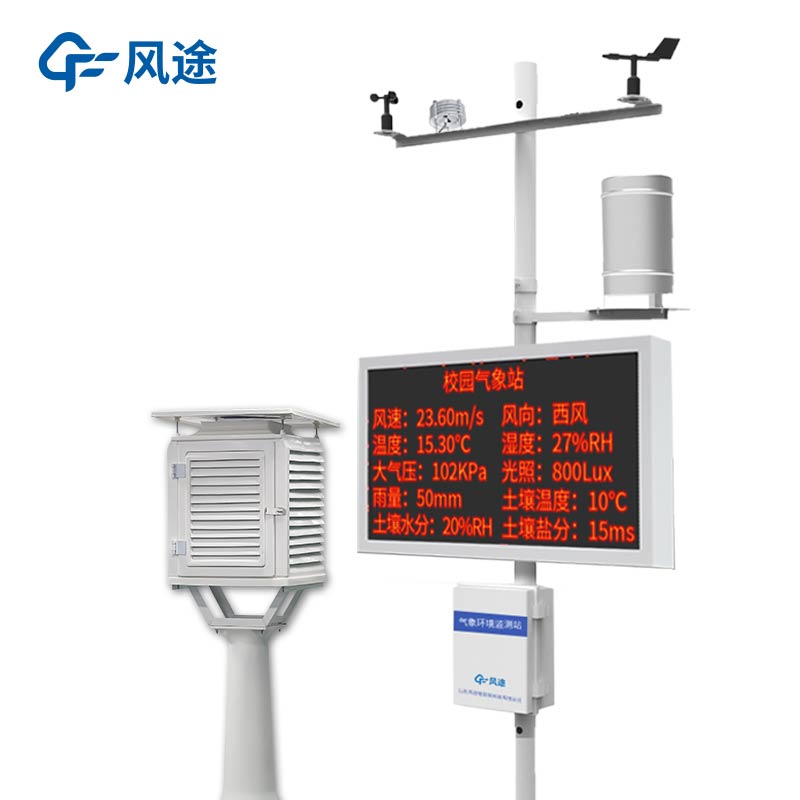Meteorological environment monitoring equipment supplier
Insist on doing high-precision customer favorite technology products
School weather station is an important part of campus science and technology education, which can not only improve students' meteorological awareness, but also increase the understanding and mastery of meteorological knowledge.
A complete set of school weather station equipment usually includes the following parts:
Sensors - used to monitor a variety of meteorological parameters such as temperature, humidity, barometric pressure, wind direction and wind force.
Riser bracket - used to mount sensors and other weather station equipment, the height of the bracket is usually 2.5 meters to meet code requirements2.
Equipment box--Contains microcomputer weather data collector with functions of data collection, real-time clock, timing storage, etc., which can be used to form a weather monitoring system with the weather station receiving server through various communication methods2.
LED screen - for real-time display of meteorological data, convenient for students and staff to understand the current weather conditions.
Collector--Automatic weather station management software, which can run on multiple operating systems, display data in real time and store them automatically, support data printing and generate meteorological graphic reports.
Cloud platform - for remote access and real-time update of data, easy to query and manage.
Glass fiber reinforced plastic shutter box - contains dry and wet bulb thermometers, used to measure temperature and humidity.
Sunshine meter - for measuring sunshine time.
Fencing - to protect weather station equipment from accidental damage.
To use the school weather station to stimulate students' interest and participation in meteorology, students can be directly involved in meteorological observations, such as recording data on temperature, humidity and wind speed. Fun activities, such as weather forecasting competitions, can be organized for students to try their hand at forecasting the weather. Sharing the results of students' observations through campus radio or bulletin boards can also increase the sense of participation. Occasionally inviting meteorologists to give talks so that students can learn more about the stories behind meteorology can also increase their interest. Through these interactive and hands-on approaches, students can not only learn but also enjoy exploring meteorology.
